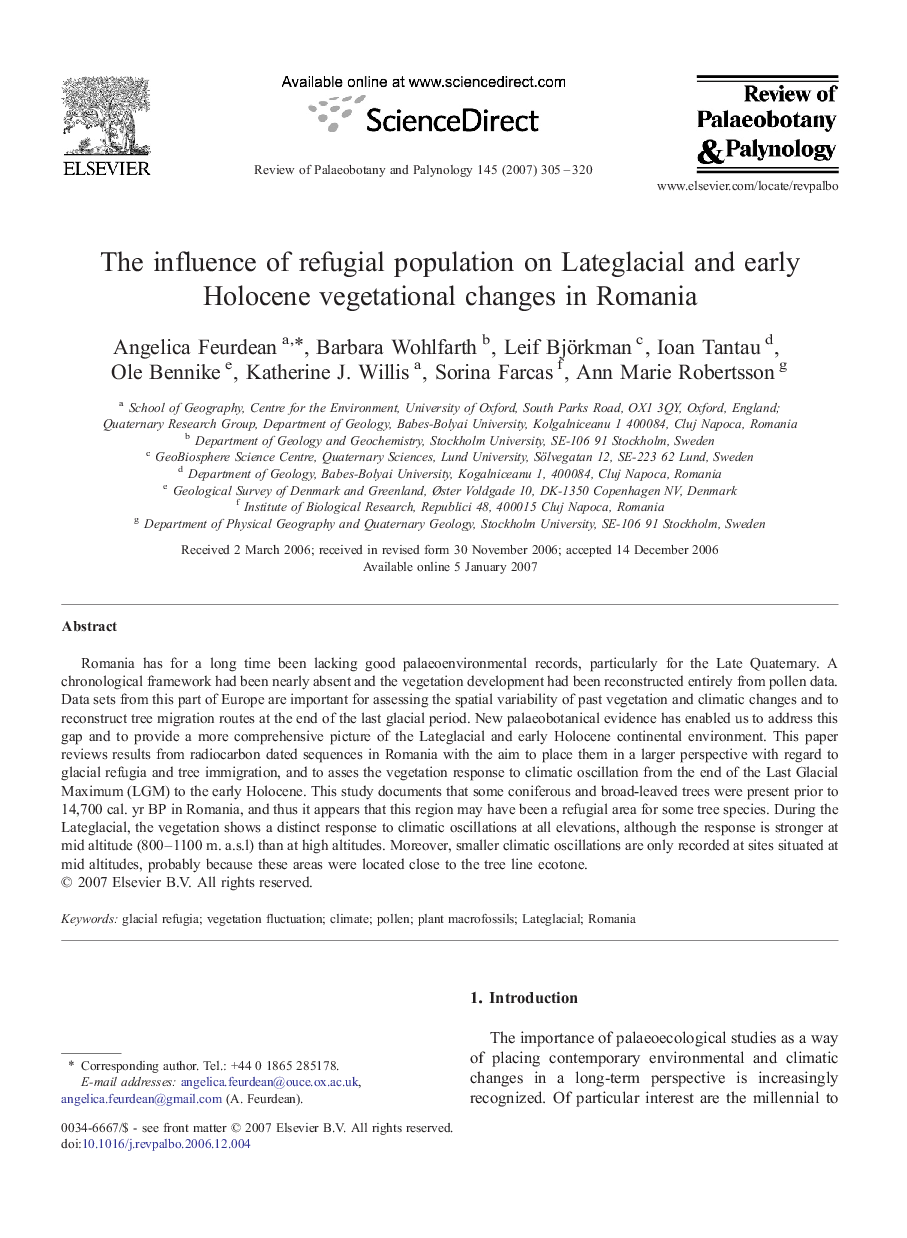| Article ID | Journal | Published Year | Pages | File Type |
|---|---|---|---|---|
| 4751105 | Review of Palaeobotany and Palynology | 2007 | 16 Pages |
Abstract
Romania has for a long time been lacking good palaeoenvironmental records, particularly for the Late Quaternary. A chronological framework had been nearly absent and the vegetation development had been reconstructed entirely from pollen data. Data sets from this part of Europe are important for assessing the spatial variability of past vegetation and climatic changes and to reconstruct tree migration routes at the end of the last glacial period. New palaeobotanical evidence has enabled us to address this gap and to provide a more comprehensive picture of the Lateglacial and early Holocene continental environment. This paper reviews results from radiocarbon dated sequences in Romania with the aim to place them in a larger perspective with regard to glacial refugia and tree immigration, and to asses the vegetation response to climatic oscillation from the end of the Last Glacial Maximum (LGM) to the early Holocene. This study documents that some coniferous and broad-leaved trees were present prior to 14,700Â cal. yr BP in Romania, and thus it appears that this region may have been a refugial area for some tree species. During the Lateglacial, the vegetation shows a distinct response to climatic oscillations at all elevations, although the response is stronger at mid altitude (800-1100Â m. a.s.l) than at high altitudes. Moreover, smaller climatic oscillations are only recorded at sites situated at mid altitudes, probably because these areas were located close to the tree line ecotone.
Related Topics
Physical Sciences and Engineering
Earth and Planetary Sciences
Palaeontology
Authors
Angelica Feurdean, Barbara Wohlfarth, Leif Björkman, Ioan Tantau, Ole Bennike, Katherine J. Willis, Sorina Farcas, Ann Marie Robertsson,
